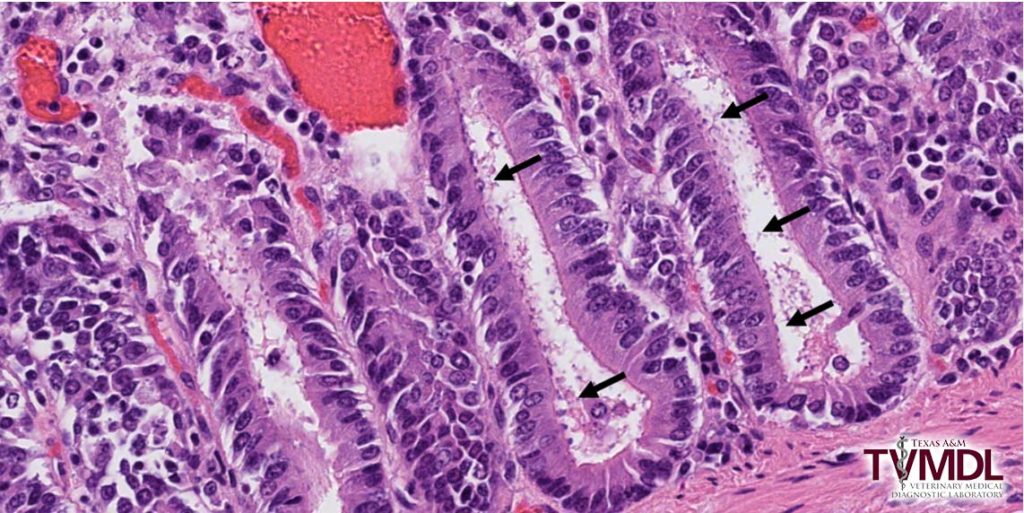Cryptosporidium in a Gerenuk
By Will Sims, DVM, MS
Tissues from a 5-month-old gerenuk, also known as a giraffe gazelle, were submitted to the Texas A&M Veterinary Medical Diagnostic Laboratory (TVMDL) in Canyon for evaluation. The calf had a history of loose stool in addition to an abscess from a previous surgery. The stool remained loose despite dietary changes, oral albendazole, injectable ivermectin, ceftiofur, fluid therapy, oral amprolium, and oral bio-sponge. The calf continued to decline, was found in lateral recumbency, and was lethargic. Despite oral administration and IV fluid therapy, the calf became agitated and dyspneic, eventually going into cardiopulmonary arrest. CPR was unsuccessful.
At necropsy, the referring veterinarian found the rumen contents drier than normal. Vessels over the jejunum, ileum, cecum, and colon appeared congested. Subjectively, the mesenteric lymph nodes appeared enlarged, but the vet was unsure if this was appropriate for age versus reactive suggesting inflammation or infection. A variety of tests was ordered to determine the cause of the underlying gastrointestinal disease.
Histopathology of the small intestine was able to identify protozoa consistent with cryptosporidium along the apical lining of the crypts in addition to an underlying enteritis with necrosis. The only other finding was reactive lymphoid hyperplasia, which was likely in response to the enteritis. Real-time PCR for cryptosporidium was used to confirm presence of cryptosporidium in feces of the calf.
Cryptosporidium is a protozoal infection that affects a wide range of species (mammalian, avian, reptilian and piscine hosts) in addition to being zoonotic and affecting man. Animals obtain the protozoa through exposure to oocysts shed in the feces. Unapparent infections are common, but the most common clinical sign is diarrhea. Coinfection with other etiologic agents causing diarrhea is common, but cryptosporidium is generally the primary cause of diarrhea in those cases. Cryptosporidium is detectable with standard fecal examination, but more advanced modalities such as PCR and histopathology are able to detect the parasite with greater sensitivity.
For more information on testing for cryptosporidium, visit tvmdl.tamu.edu or call one of the agency’s full services laboratories.
